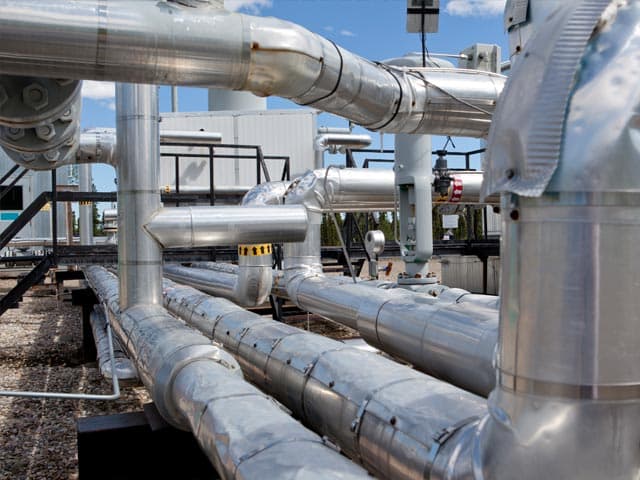CE Marking Services
Navigate complex European market requirements with confidence through Element's comprehensive CE Marking services. We streamline your certification journey by combining testing, documentation, and compliance into one efficient program, while our expert risk assessment prevents costly recalls and delays. With Notified Body status for multiple directives and integrated environmental testing capabilities, we help you achieve faster market access while ensuring complete regulatory compliance. Our expert-led approach saves you time and money while maximizing success.

What are CE Marking Services at Element?
CE Marking is a compulsory EU conformity label that allows for the free movement of goods. This makes it a necessary passport to trade if you want your product to be available in the European Union and the United Kingdom.
Partner with Element to transform the complex 8-step CE marking requirements into a straightforward path to global market access. Our comprehensive testing and certification programs combine CE Marking with other major certifications like IECEE CB Scheme, IECEx scheme, SCC (Canada)and NRTL (US), giving you access to over 50 countries through a single, efficient process.

What can Element offer you for CE Marking Services?
Key Services Offered
Key Services Offered
Element's integrated approach combines testing, certification, and documentation into a single efficient program. Why struggle with multiple testing partners when you can streamline your compliance journey? Our expert team handles everything – from initial risk analysis through to final certification. We'll ensure your products meet all safety standards while maximizing their market potential, saving you time and reducing costs through our integrated approach.
We provide:
- Comprehensive regulatory support for global market access including interpretation of essential versus minimum requirements
- Complete certification services and environmental testing integration – including Radio Equipment Directive, EMC directive, Low Voltage Directive, and ATEX directive for explosive atmospheres
- Risk assessment services aligned with specific directive requirements for electrical safety, shock hazard prevention, and isolation
- Technical documentation preparation
- Supply chain compliance monitoring.
Products We Test
Products We Test
We test a comprehensive range of electrical and mechanical devices, from consumer electronics to industrial equipment. Our expertise covers products requiring EMC testing, radio equipment certification, ATEX certification for explosive atmospheres, and safety testing for electrical devices and medical equipment including isolation requirements and shock hazard prevention. We specialize in products needing multiple directive compliance and provide comprehensive validation of essential safety requirements.
Which Labs Offer This Service
Which Labs Offer This Service
Our expert team operates from tech hubs across the world, providing global access to our end-to-end capabilities. Find out where your nearest connected technologies hub is on our Locations Page.
Key Business Protections
Key Business Protections
We help protect your business reputation and prevent costly recalls through comprehensive risk analysis and testing. Our services include RAPEX compliance monitoring, "What if?" scenario testing, and detailed safety assessments covering electric shock and fire hazards. We validate both essential and minimum requirements, ensuring that thorough technical evidences supports your self-declaration. This proactive approach helps ensure your products are not just functionally acceptable but inherently safe for users, domestic animals, and property during installation, use, and maintenance.
Training & Support
Training & Support
We offer flexible CE Marking training courses led by seasoned experts, providing both standard and bespoke packages to meet your business needs. Our training helps your team understand the relationship between directives and harmonized standards, the 8-step CE marking process, essential versus minimum requirements, and ongoing compliance requirements, ensuring long-term success in maintaining certification.
Standards we test to and products we test
- Electrical equipment and devices
- Radio and telecommunications equipment
- Industrial machinery
- Smart home devices
- Consumer electronics
- Power tools
- Medical devices
- Automotive components
- Equipment for explosive atmospheres
Your Challenges, Our Solutions
Regulatory Complexity Made Simple
Speed to Market Critical
Cost Management Pressure
Documentation Burden Relief
Element Experts at your service
Why Choose Element

Documentation Made Easy
Navigate Standards with Confidence
Secure Your Supply Chain
Fast-Track EU Market Access
Frequently asked questions
What are the CE mark testing requirements?
CE marking is mandatory to be able to sell many products in the EU. The requirements are driven by directives or regulations - legislation drafted and approved by the European Commission that must be integrated into the legal systems of all Member States. Most directives or regulations are intentionally vague about specific requirements for testing and compliance and focus on two key elements:
- Essential requirements: Core safety and performance requirements that must be met for CE marking
- Minimum requirements: Technical details contained in harmonized standards that can be updated without changing the legal text
Determining which directive(s) or regulation(s) applies to your product can be challenging, considering that most are written in a legal form rather than for laypersons, and the necessary detail is often buried in the directive or regulation itself.
An essential step in compliance with a directive or regulation is performing a risk assessment. This is the process where a manufacturer identifies all the hazards covered by the directive or regulation and then mitigates these hazards through a test assessment (typically using a harmonized standard(s)) or through a modification to the design, labelling, or instructions
How do I get a CE Mark for my products?
For most products, CE marking follows an 8-step process to certification.
Although it may seem like a complicated process, obtaining a CE Mark can be reduced to a relatively simple set of steps. Our experts can assist in every stage of this journey, from determining the appropriate requirements to maintenance testing.
The CE marking process includes:
- Determining the applicability and requirements of the directive(s) and regulation(s)
- Identifying the appropriate standard (includes involving a Notified Body as needed and creating a test plan)
- Performing the testing / applying the standards
- Compiling technical information (includes completing a Notified Body review if needed and issuing a Notified Body Type Examination certificate or Statement of Opinion (SoO) if required)
- Generating a Declaration of Conformity (DoC)
- CE Marking equipment
- Placing equipment on the market (putting the product into service)
- Maintaining compliance through regular testing and auditing
What risks are associated with CE marking electrical equipment?
Three key risks exist: (1) self-declaring without sufficient evidence to support the essential requirements; (2) lack of expert knowledge of the test standards, and (3) ensuring product safety beyond functional acceptability. Third-party testing helps mitigate these risks and prevent costly recalls.
Why is third-party electrical safety testing important for CE marking?
Third-party testing from an accredited laboratory ensures products meet fire safety requirements, have suitable electrical isolation, prevent shock hazards, and include clear safety instructions. A third-party report differentiates the CE marking from self-declaration which increases credibility with retailers and consumers while enabling access to global markets. While self-declaration is possible for some product categories, third-party testing provides crucial evidence to support your declaration and protect against costly recalls or legal issues.
What global certification schemes can Element support?
Element provides access to major international electrical safety certification schemes, including the IECEE CB Scheme (operating in 50+ countries), IECEx Scheme (operating in 50+ countries), CE marking (Europe and United Kingdom), and NRTL/SCC certification (United States and Canada).
What is the process for CE marking?
CE marking is a mandatory requirement for EU market access. While the 8-step CE marking process may seem complex, our experts bridge the knowledge gap, guiding you at every stage from identifying requirements to maintenance testing. The process is as follows:
- Determining the requirements
- Identifying the appropriate standards (includes involving a Notified Body as needed and creating a test plan)
- Performing the testing / applying the standards
- Compiling technical information (includes completing a Notified Body review, if needed, and issuing a Statement of Opinion (SoO) if required)
- Generating a Declaration of Conformity (DoC)
- Affixing the CE Marking on products/equipment
- Placing equipment on the market (putting the product into service)
- Maintaining compliance through regular testing and auditing
If you need guidance tailored to your business, Element’s CE Marking Training courses, led by seasoned experts, offer flexible packages to address your questions and provide best practice guidance.
If you require guidance on the CE Marking process and how it applies to you and your products, Element’s CE Marking training courses are delivered by seasoned subject experts. They can address your questions and provide best practice guidance with flexible standard and bespoke packages to meet your business and staff needs.
9,000+engaged experts
167countries covered
50+countries via CB Scheme


Explore our global network of labs and find your nearest location
VIEW ALL LOCATIONSRelated services

UKCA Marking – Testing, Certification, and Guidance
Element provides UKCA marking, testing, and certification services to help manufacturers navigate UK regulatory changes. We streamline compliance, ensuring market access and seamless transitions from CE marking.

Electrical Safety Testing and Certification Services
Accelerate your electrical product's journey to market with Element's comprehensive Electrical Safety Testing and Certification services. Navigate certification requirements efficiently, reducing time and costs while maintaining rigorous safety standards.

Explosive Atmosphere Testing and Certification
Element ensures your products comply with global explosive atmosphere testing regulations, including Global IECEx certification, ATEX certification for Europe, UKEX for United Kingdom, HazLoc certification for North America & DSEAR in the UK.

Product Compliance Testing Services
Ensure global product compliance with expert testing & certification for FDA, REACH, RoHS, CE & more. Fast, tailored support for complex market needs.

Wireless Protocol Testing
Get comprehensive Wireless Protocol Testing for Matter, Zigbee & Bluetooth from Element, one of the few globally authorized labs for Matter and Zigbee certification. Reduce time-to-market with end-to-end support from design to certification.

Medical Device Testing Services
With Element as your medical device testing partner, you’ll enjoy the benefit of a single comprehensive supplier across feasibility, R&D and prototype trials, through product development, regulatory validation and production quality control.



